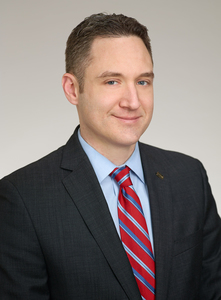Fine-Tuning Content for Conversions
// By Jane Weber Brubaker //
 How VITAS Healthcare’s content strategy is evolving to better serve site visitors and meet business objectives.
How VITAS Healthcare’s content strategy is evolving to better serve site visitors and meet business objectives.
Healthcare marketing is all about continuous learning. It’s a little like climbing a mountain. Just when you think you’ve reached the summit, you find there’s another crest, and then another. But unlike mountain climbing, there is no final destination in healthcare marketing, and that’s what makes it interesting, at least for those who aren’t content to rest on their laurels.

Jeffrey Stewart, assistant vice president of digital communications at VITAS Healthcare
When Jeffrey Stewart, assistant vice president of digital communications at VITAS Healthcare, came on board in 2014, his initial challenge was to improve organic traffic. And he did. Organic traffic grew 1.3 percent, and VITAS gained about 4,200 monthly users during Stewart’s first year. “We were driving incremental gains — but is that really enough?” he asked an audience of healthcare marketers at the 2019 Society for Health Care Strategy & Market Development (SHSMD) annual conference in September.
Stewart attributes the initial positive results to a more rigorous approach to search engine optimization (SEO), focused on local SEO and technical SEO. But he wasn’t satisfied with modest growth. “We knew that real growth and aggressive growth [were] going to come through increased content,” he says. Adding content did drive more traffic. But volume alone isn’t a content strategy. If the people landing on your content pages can’t find what they’re looking for, and the traffic isn’t driving your top business priorities, what’s the point?
Under Stewart’s leadership, the digital team embarked on a multi-year journey to figure out the “why” of content. The organization’s content strategy today is sophisticated and exacting. Stewart admits there is still more work to be done. “It’s hard to wake up every day and keep at it,” he says, “but what we have done is build a mentality. The team knows that this is how we approach content. We don’t just create content. We ask the critical questions.”
This content is only available to members.
Please log in.
Not a member yet?
Start a free 7-day trial membership to get instant access.
Log in below to access this content:

